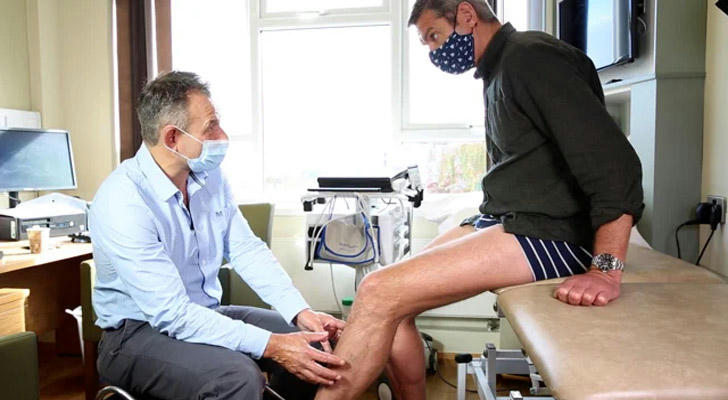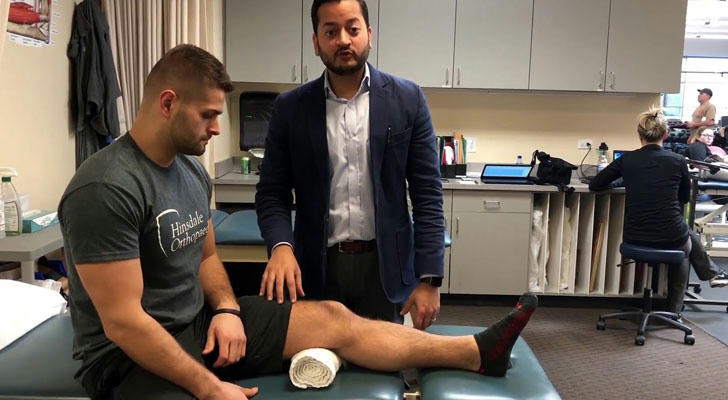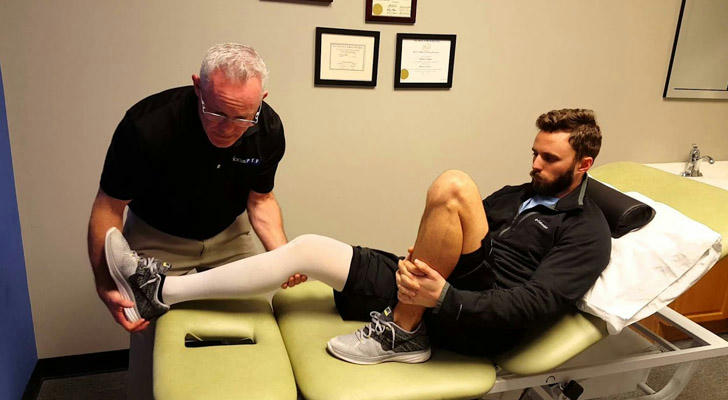Understanding Varicose Veins and Simple Treatment Methods
Varicose veins are a common condition that affects many individuals, particularly those who find themselves sitting or standing for long periods due to their jobs or lifestyle. You might notice that some veins in your legs appear bulging and twisted, often colored purple or blue, resembling “meandering rivers.” While for some people, varicose veins may seem like just an aesthetic concern, they can also lead to significant discomfort, pain, and other health issues. Fortunately, there are various methods available to alleviate these symptoms and improve overall quality of life.

What Are Varicose Veins?
In simple terms, varicose veins occur when blood does not flow smoothly back to the heart. This condition arises when the one-way valves in the veins that help regulate blood flow become weakened or damaged. As a result, blood can start to pool in the veins of the legs, leading to swelling and the characteristic bulging appearance. While varicose veins can occur anywhere in the body, they are most commonly found in the legs and feet, where the pressure from standing or sitting for extended periods can worsen the condition.
Symptoms of Varicose Veins
Individuals with varicose veins may experience several symptoms that can vary in intensity. Some common symptoms include:
• Leg Pain and Heaviness: Many people report a sensation of aching or heaviness in their legs, particularly after prolonged periods of standing or sitting.
• Swelling: There may be noticeable swelling in the ankles and calves, particularly by the end of the day. Leg Cramps: Some individuals may experience painful cramps in the legs, especially at night.
• Skin Changes: The skin may change color, appearing reddish or discolored, and you might notice blue or purple veins visible under the skin.
• Itching or Irritation: Varicose veins can lead to itching or irritation in the affected area, contributing to overall discomfort.

Common Treatment Methods for Varicose Veins
The treatment approach for varicose veins varies based on the severity of the condition and the symptoms experienced by the individual. For mild cases, simple lifestyle changes can significantly alleviate discomfort. In more severe situations, medical intervention may be necessary. Here are some common treatment methods:
1.Lifestyle Changes
• Regular Exercise: Engaging in regular physical activity, such as walking or cycling, can help improve blood circulation, reducing pressure on the leg veins.
• Avoid Prolonged Sitting or Standing: If your job requires long periods of sitting or standing, try to take breaks to change positions frequently. This can help prevent blood from pooling in the veins.
• Elevate Your Legs: Whenever you have the opportunity to rest, elevate your legs to promote better blood return to the heart. This can significantly reduce swelling and discomfort.
• Wear Compression Stockings: These specially designed stockings apply gentle pressure to the legs, helping the veins push blood upward toward the heart more effectively.
2.Sclerotherapy
• For smaller varicose veins, doctors often recommend sclerotherapy. This procedure involves injecting a solution directly into the affected vein, causing it to scar and eventually fade from view. It is minimally invasive and can be performed in a doctor’s office.
3.Laser Treatment
• If you have more pronounced varicose veins, laser treatment might be a viable option. This method employs focused light energy to heat and close off the affected veins, allowing blood to reroute through healthier veins. This procedure is minimally invasive and usually results in little to no downtime.
4.Radiofrequency Ablation
• Similar to laser treatment, radiofrequency ablation uses heat to close the affected veins. A thin catheter is inserted into the vein, and radiofrequency energy is applied, causing the vein to collapse. This technique is effective for more severe varicose veins and is generally well tolerated by patients.
5.Surgical Treatment
• In cases where varicose veins are particularly severe and other treatments have not been effective, surgical intervention may be necessary. Procedures such as vein stripping involve making an incision and removing the damaged vein entirely. While this option may sound intimidating, it can provide significant relief for those with severe symptoms.

Ava's Treatment Story
Consider the case of Ava, a 42-year-old office worker who spends her days sitting at a desk. Over the years, she developed noticeable varicose veins, which not only affected her appearance but also led to a constant feeling of heaviness and pain in her legs. Initially, Ava dismissed her symptoms, assuming they were merely cosmetic. However, as the discomfort intensified, she decided to seek medical advice.
After consulting a doctor, Ava was recommended laser treatment, a minimally invasive procedure that could effectively address her varicose veins. The entire treatment process took less than an hour, and she was back to her daily routine within a few days. Reflecting on her experience, Ava stated, “I used to think varicose veins were just a beauty issue, but I never realized they could also affect my health. I’m so glad I took action; not only did my appearance improve, but my leg discomfort is gone.”
Final Advice
Varicose veins affect more than just appearance; they can lead to physical discomfort and impact one’s quality of life. Whether through simple lifestyle adjustments or seeking professional medical help, various solutions are available. If you are experiencing symptoms of varicose veins, do not ignore them. Taking action early can help you avoid complications and restore a healthy, active lifestyle.
